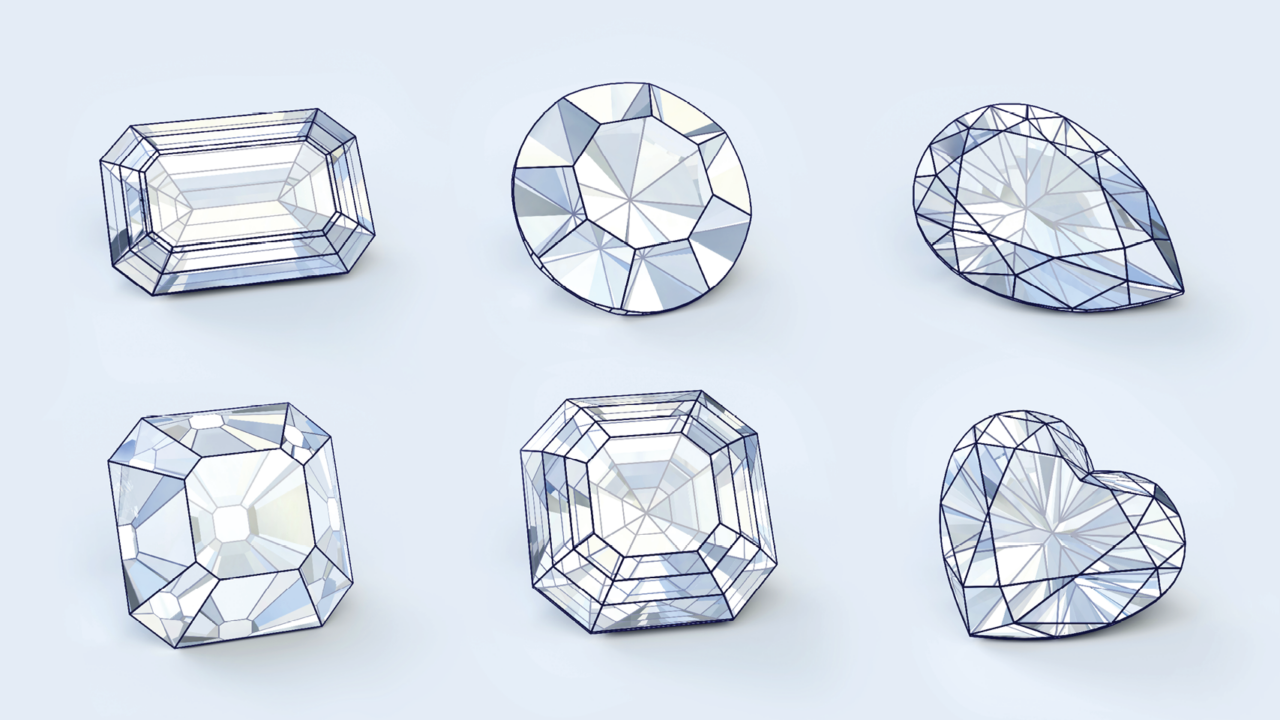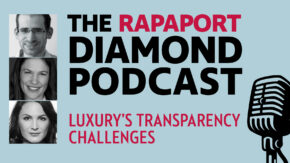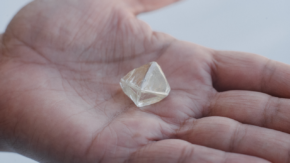Wholesalers and manufacturers often describe their inventory as rounds and fancies, with the latter being a catch-all for non-round shapes. In the market for colorless natural diamonds, the increased popularity of fancy cuts reflects the way styles are being promoted today.
“Social media influencers are driving the trends right now,” says Gaurav Khandelwal (aka GK), sales director of Union Gems in Houston, Texas, which specializes in fine-make diamonds. “Trends are no longer driven by brands alone, but by sites such as Ring Concierge and [jewelers] like Olivia Landau and Stephanie Gottlieb,” who have a strong social media presence.
Geographic location is no longer a factor in the popularity of specific fancy cuts, according to diamond suppliers — unlike in the past, when US trends tended to start on the east and west coasts and then spread to the rest of the country.
[People between 22 and 38] are swept up in the concept that fancy shapes are cool. When everyone else has a round engagement ring, [these let them] express their own individuality.
The shape of things
Ovals and elongated fancies generally top the list when it comes to sales. Khandelwal identifies “the big three as oval, radiant and emerald cuts, followed by cushions and pears.”
Joseph Ladd agrees that “ovals are strong.” The owner and president of wholesaler and manufacturer Ladd Diamonds in Los Angeles cites long radiants and long cushions as the next two on the popularity list. He’s seen some movement in pear shapes, but only those that are “a little bit longer, with ratios of 1.6 and above.”
“Ovals are the most consistent fancy shape and the fastest movers,” affirms Jai Bhansali, vice president of sales at wholesaler Diagem in Chicago, Illinois. In pear shapes, he’s seen demand in VS but not SI clarity, and while he has received calls for marquises, he can’t determine whether that’s indicative of greater demand or less availability.
David Rakower is more certain about the rise of the marquise. “The popularity of the elongated emerald cut is almost like old hat, but marquises are bubbling to the surface,” reports the president of New York based-manufacturer Joseph Asher Collection.
He predicts that marquises will make “a big, powerful statement in 2024 and 2025,” attributing the increased demand to 22- to 38-year-olds getting married. “They are swept up in the concept that fancy shapes are cool. When everyone else has a round engagement ring, fancy shapes allow them to express their own individuality. Instead of an oval, they select a marquise that is a little bit off the radar.”
Cut and make are the most important criteria for buyers, according to Bhansali. “Anything nicely made moves well,” he says, adding that “even poorly made ovals which are too heavy or too short” do not sell.
There are also some shapes that simply aren’t capturing customers’ interest. “Few people want to hear about princess cuts and cushions at the moment,” says Rakower, while Bhansali adds that Asschers are “slow for sure.” Khandelwal, too, cites princesses and Asschers as slow movers, and Ladd includes heart shapes in that mix.
Sizing up the market
Size-wise, consumers seem to be looking for stones that are larger than 1 carat, though suppliers differ on how much larger. For Rakower, 1- to 2-carat fancies are seeing good sales. Khandelwal points to both ovals and radiants in the 1.50- to 2-carat range as his best sellers, with emerald cuts “moving well” in the 1.75- to 3-carat range.
Bhansali has found that the “odd sizes”— 1.25 and 1.75 carats — show greater demand than 1.50- and 2-carat fancies. “People think those sizes have better value,” he explains. He sees less consistency in the 3 carat range.
Stones of 2 to 3.99 carats are “doing very well” for Ladd in SI to VS clarities, though sales of 1.50-carat, SI2 goods are “sluggish” — a situation he attributes to the adverse effects of lab-grown.
Narrowing the price gap
Year-on-year fancy prices are down by approximately 5% to 7%, reports Khandelwal — a “reasonable year-over-year correction and more palatable compared to what is happening to the round market, where changes are significant.”
But what he finds most fascinating is that the disparity between round and fancy prices, which was “once as high as 40%, is not as significant. Pricing is far more similar across shapes than at any point in the past.” He attributes this to rounds — traditionally the more expensive of the two categories — being “a little bit more commoditized and in lower demand.”
Another factor Khandelwal cites is that “diamond manufacturers are reticent to cut SI goods, because they want to manufacture VS and better,” so the higher qualities dominate the market.
“If anything,” says Bhansali, “pricing has evened out a bit.” The reasons for this stabilization, he believes, are a lack of goods across the board and greater control over supply, as this has eliminated the less desirable stones.
“It’s all about supply and demand,” affirms Rakower. Prices for both round and fancy natural diamonds were softer throughout last year, he says, “but [since] the end of 2023 and the beginning of 2024, things have firmed up a bit.”
Ladd has noticed a “slight drop” in fancies, while rounds have bounced back, lessening the previous “huge gap” between the two. Still, prices have held firm in the finer makes and shapes because of scarcity.
The year to come
Looking ahead, some diamond suppliers are preparing for the unexpected.
“Things always get a little freaky around election year for every business, not just jewelry,” says Rakower. “There is no surprise about what happens around tax time or elections. It’s the in-between cycles that have me scratching my head.”
Ladd’s caution about the rest of the year has led him to avoid buying aggressively. “We’re filling the shelves. I prefer to have a diverse inventory rather than 20 of one item,” he explains.
Bhansali voices cautious optimism. “We’re not going to have a repeat of [the strong sales we had in] 2021 or 2022, but based on what I have seen, I would hope 2024 will be a little better than last year, or at the very least, the same. I think we’ll see a return to normalcy.”
Khandelwal is slightly more positive. “I’m quietly optimistic that we will actually have a good year. Retailers will find themselves pleasantly surprised by the end of the year. They should love the fancy business, because there’s a unique story behind each diamond.”
Main image: A selection of fancy-cuts diamonds. (Shutterstock)
This article is from the March-April 2024 issue of Rapaport Magazine. View other articles here.
Stay up to date by signing up for our diamond and jewelry industry news and analysis.



